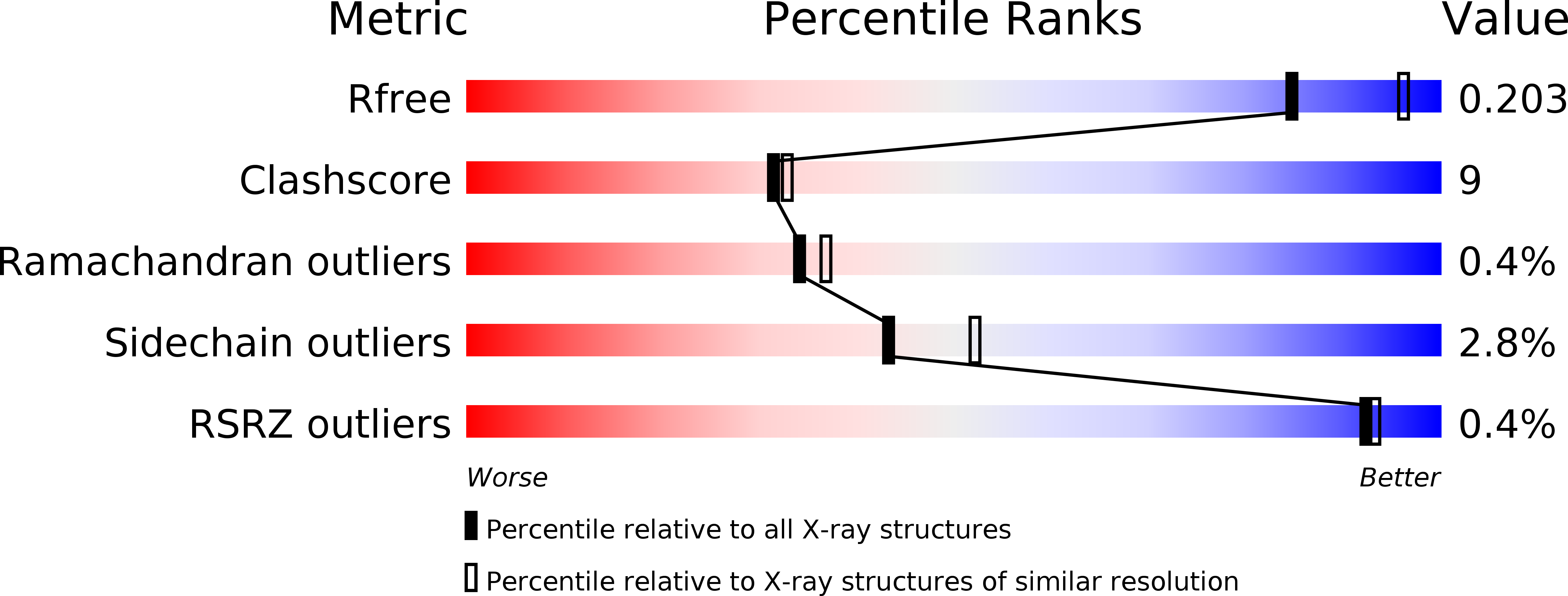Crystal structure of rat short chain acyl-CoA dehydrogenase complexed with acetoacetyl-CoA: comparison with other acyl-CoA dehydrogenases.
Battaile, K.P., Molin-Case, J., Paschke, R., Wang, M., Bennett, D., Vockley, J., Kim, J.J.(2002) J Biol Chem 277: 12200-12207
- PubMed: 11812788
- DOI: https://doi.org/10.1074/jbc.M111296200
- Primary Citation of Related Structures:
1JQI - PubMed Abstract:
The acyl-CoA dehydrogenases are a family of flavin adenine dinucleotide-containing enzymes that catalyze the first step in the beta-oxidation of fatty acids and catabolism of some amino acids. They exhibit high sequence identity and yet are quite specific in their substrate binding. Short chain acyl-CoA dehydrogenase has maximal activity toward butyryl-CoA and negligible activity toward substrates longer than octanoyl-CoA. The crystal structure of rat short chain acyl-CoA dehydrogenase complexed with the inhibitor acetoacetyl-CoA has been determined at 2.25 A resolution. Short chain acyl-CoA dehydrogenase is a homotetramer with a subunit mass of 43 kDa and crystallizes in the space group P321 with a = 143.61 A and c = 77.46 A. There are two monomers in the asymmetric unit. The overall structure of short chain acyl-CoA dehydrogenase is very similar to those of medium chain acyl-CoA dehydrogenase, isovaleryl-CoA dehydrogenase, and bacterial short chain acyl-CoA dehydrogenase with a three-domain structure composed of N- and C-terminal alpha-helical domains separated by a beta-sheet domain. Comparison to other acyl-CoA dehydrogenases has provided additional insight into the basis of substrate specificity and the nature of the oxidase activity in this enzyme family. Ten reported pathogenic human mutations and two polymorphisms have been mapped onto the structure of short chain acyl-CoA dehydrogenase. None of the mutations directly affect the binding cavity or intersubunit interactions.
Organizational Affiliation:
Department of Biochemistry, Medical College of Wisconsin, Milwaukee, Wisconsin 53226, USA.
















